In very early times great respect was paid to baboon; and the simple-minded Egyptian, when he heard him chattering just before the sunrise and sunset, assumed that he was in some way holding converse or was intimately connected with the sun god.
In Phaidros Plato and Socrates declare that “He (Toth, the Egyptian baboon-shaped god of wisdom) was who invented numbers and arithmetic and geometry...” Aristotle also argued that the Egyptians had created the caste system and hence “Egypt was the cradle of mathematics because the caste of priests were given great leisure.” According to him, the priests had invented the mathematikai technai (mathematical arts), which included geometry, arithmetic and astronomy, which the Greeks were beginning to possess. These priests spent most of their time squaring circles to find out the value of the number π.
With time, Thoth evolved into a human and under his Greek name Hermes Trismegistus wrote a book entitled Hermetica which, became the inspiration for all subsequent heliocentrists including early Church Fathers and Copernicus. Hermes became an icon in many Roman churches; one of them should be mentioned here. It was painted by Giovanni di Stefano in 1488 for the Cathedral of Siena; its stylized frame is made of swastikas, the solar symbol since time immemorial. Let me remind here that Adolf Hitler who for a period of time resided at Lambach Abbey in Austria, first saw the swastika symbol on the Abbey's exterior decorations.
The early heliomaniac, pharaoh Akhenaten had his children portrayed as apes. In 1838 Charles Darwin wrote: “Origin of man now proved...He who understands baboon would do more toward metaphysics than Locke.” Heliocentrism and evolutionism converge in the baboon-shaped god Thoth.
Ficino translated Orphica, a collection of hymns to various pagan deities, attributed to Orpheus but actually dating from the early centuries AD. He practiced magical self-improvement by singing hymns, accompanying himself on his ‘Orphic lyre’. He believed that by singing the hymn to a particular planetary deity, while concentrating his thoughts and emotions on the planet, he could draw down into himself a flow of the planet’s influence and power..
One of Ficino’s pupils, Francesco da Dia Cetto, explained more clearly how this was done. To attract the influence of the sun, the Orphic hymn to the deity was sung when the sun was ascending in Leo or Aries, on a Sunday and in the hour of the sun. The magician surrounded himself with things corresponding to the sun. He wore a golden mantle and a crown of laurel, strewed sunflowers about him, burned myrrh and frankincense on an altar and anointed himself with saffron, balsam or honey made when the sun was in Leo. The technique induced a sense of superhuman power, which could be applied to curing disease or for any other purpose.
In Egyptian myths a Cow was impregnated by a beam of light from the Sun, and a white bull-calf was born which became the sacred Apis Bull. G. Bruno who dreamed about converting the world to the solar religion of the ancient Egypt was like those Israelites who forced Aaron”to make them Golden Calf” because the gold was believed in Egypt to be flesh of the sun god.
Palestinian history textbook teach: “Moses and his followers wandered in the desert; they were not endowed with any scientific or artistic talents and made no cultural achievements whatsoever…” Because they did not belong to the leisure class they could not have science.
Using the words of the Psalmist, the founding fathers of the modern astronomy and their Palestinian admirers: “Set their mouth against the Heavens, and their tongue walketh through the earth. And they say how God knows. And is there knowledge in the Eternal God?” (Ps. 73:9-11).
They recognized the God of the Bible as a liar and ignoramus because He taught: “When you look up to the sky and behold the sun and the moon, and the stars, the whole heavenly host, you must not be lured into bowing them or serving them” (Dt. 4:9)
Behind the scholastic equivalence of light and matter which gives rise to the “world machine” (machina mundi) by plurifying itself was the concept of the philosophers who speculated that all things were composed of atoms and who said that bodies were composed of surfaces, and surfaces of lines, and lines of points, like in Galileo's Book of Nature But since there is no reality to a mathematical point or line, except when they are being conceptualized as such the world of Euclid belongs to the same category as the world of Platonic ideas; though merely mental, they were the ultimate objects, of which the visible and tangible objects of the world were only pale shadows. And that’s exactly what the Indian yogis dismissed contemptuously as the illusory realm of maya. In the Eastern view, searching for some kind of reality, either in the physical world (prakriti) or in the rational mind (manas) is a sheer waste of time, since they are both ultimately unreal - “phantom figures” in Omar Khayyam's heliocentric rubayat. We are such stuff as dreams are made of (Shakespeare)
The Buddhist aims at pure consciousness with no object in sight, which is practically synonymous with sunya (this sunya is the conditio sine qua non for the Newton gravity to work), the void. The Buddha merely stressed the sole reality of nirvana, which the Germans translate as Nullpunkt.The Tao Te Ching and the Chuang Tzu are the cornerstones of the Taoist tradition and in them we find the initial identification of Nonbeing (Big Bang’s starting point) with the source of all things.
In other places, the preferred term is wu (in Japanese, mu), commonly translated as “Nonbeing”. Chuang Tzu, in effect, made Nonbeing an equivalent for the absolute Tao, a kind of absolute void. The principles of this nihilistic ontology are mirrored in Hindu mathematics which evolved into a mature place-value system promoting to full membership of a tenth numeral a round symbol for zero (graphic representation of point) or sunya, as the Hindus called it. Confusion about the status of this mysterious numeral persisted for centuries, and as late as the 15th century it was described as “a symbol that merely causes trouble and lack of clarity.”
How, it was asked, could a symbol, which means “nothing”, when placed after another numeral, enhance its value tenfold? The problem finds its solution in the philosophical theory of a “coincidence of opposites”, that is identification of elements that are mutually exclusive in ordinary logic. The goal of introspection is to overcome the intellectual “opposites”; the being arises in the context of non-being; man is a walking corpse, as a Russian proverb says. The Buddhist concept was known as dhrama-dhatus pratitya-samupada, which translates as “the interdependent arising of the universe”: things are said to have “emptiness” and “fullness of emptiness” at the same time.
According to Max Muller "the two words 'cipher' and 'zero,' are in reality but one. Cipher is the Arabic sifr, and means empty, a translation of the Sanskrit name of the nought sunya. The Arabs had their figures from Hindustan, and never claimed the discovery for themselves. In Boethius's Geometry, composed in the sixth century, we find the Pythagorean numerals the 1 and the nought, as the first and final cipher.
Consider James Jeans’ description of the universe of relativity as the four-dimensional surface of a cosmic sphere of which the inside is made of “empty space welded onto empty time.” The Puranas insist on the identity of Vishnu with Time and Space. And Vishnu, like Chuang Tzu's absolute Tao, is a kind of absolute void. The Jewish Pythagoreans or kabbalists recognized numbers as prima materia. Their “Genesis” proclaimed: In the beginning nothing (zero) blew up. Amen!
Accordingly, the modern heliocentrists believe that the world we see and experience in everyday life is simply a convenient mirage attuned to our very limited sense, an illusion conjured by our perceptions and our mind. All that is around us, which appears so substantial, is ultimately nothing but ephemeral networks of particle-waves whirling around at light speed – so called matter is mostly emptiness, void of anything except occasional dots and spots! And scattered electric charges. If all the nuclei of all atoms that make up the whole of mankind were packed together, their global aggregate would be the size of a large grain of rice. But that “grain of rice” devours daily two billion eggs, 1.6 million tons of corn, 727,000 tons of potatoes, 365,000 tons of rice, and the “favoured races” of the world enjoy 2.7 tons of caviar in Moscow’s restaurants! That’s how the heliocentric magic works!
The Bible follows Israel’s 12 memorial stones from the temporarily dry bed of the Jordan (Josh 4:19) to a place called Gilgal and then loses track of them forever. The word ‘gilgal’ means ‘a circle of stone’, (Ibn Ezra in his 12th c. work The Book of the Number calls zero galgal, meaning wheel or circle) and throughout Europe and the Mideast, “circles of large stones have been found dating back a quarter million years or more, to homo erectus times.” The most famous stone circle is Stonehenge. Stonehenge well corresponds to Diodorus’s description of a “magnificent temple of Apollo” which he locates “in the center of Britain.” At that time the British had already their first homo erectus, I don't know, if male or female, or maybe both evolved simultaneously!
Sar (circle) is the Babylonian god of the sky. He is also Assaros or Asshur (the son of Shem), and Zero -- Zero-ana, the chakkra, or wheel, boundless time. The god Aten, or the Egyptian counterpart of the Nordic Odin (Wotan) had originally represented merely the physical sun, but Amenhotep stripped that body of all the gross theological conceptions which had been linked with it ever since the Pyramid Age endowed it with a new esoteric meaning. The ancient symbols of Ra – the pyramid, the falcon, the lion and cat- he replaced by a simple CIRCLE representing the sun’s disk. Since then, as Plato observed, god was always geometrizing writing for Galileo the Book of Nature. (“Philosophy is written in that very large book that is continually opened before our eyes (I mean the universe), but which is not understood unless first one studies the language and knows the characters in which it is written. The language of that book is mathematical and the characters are triangles, circles, and other geometric figures.” Galileo Galilei: Pensieri, motti e sentenze; Florence, 1949) The Hindu Vishnu holds a disc or a rounded piece of gold in his hand. The Egyptian Ra wears a disc as a crown.
A Babylonian column made of serpent-circles, bears on its top a symbol of the sun. Such a pole is symbolic of the pivotal point around which all things turn, and so is a counterpart of the Buddhist Tree of Enlightenment in the “Immovable Spot” at the center of the world.
The chakra (wheel) represented the sun in early Vedic ceremonies. With the wheeling planets overhead and the circumference of the horizon, the cosmos of the ancients must have seemed obviously circular. Life in the cosmos was created, and maintained, by the balance of opposing forces – male and female, day and night, heat and cold, good and evil, attraction and repulsion (coincidence of opposites ). Such ideas as this concerning the nature of the universe were summarized in the “wheel of life”. To this diagram of cosmic principles, must be added a concept which seems, almost visibly, to set the cosmic circle to revolving like a wheel. This is the idea, present in Sanskrit, Pali, and Greek, that life occurs in an endless cycle of rebirths.
No wonder then that the Hebrews destroyed the circles of stones that stood for this solar theology also known by its Greek term anakuklesis. The phoenix-like character of matter reborn from its “ashes” was “proved” by the Soviet physicist A. Sakharov in his dogma of the “solar phoenix”, or strictly materialistic principle of the “spontaneous resurrection of energy (The Hindu term brahma means energy) such as takes place in the sun's core.”
A certain Honi the circle drawer used to invoke God's power (through drawing circles) to cause it to rain. John Dominique Crossan argues the Honi in drawing his circles was performing magic, not as an Hasid (a Hasid being a charismatic figure who worked wonders and operated outside of the established religion) but as a magician, which got results. E.P. Sanders discussed Honi as the son who importunes the father for blessings as a parallel to Jesus being called the “Son of God” in Matthew 14:33. The reason is because no one ever claimed that Honi attributed to his own power the ability to cause it to rain from making circles, rather it was because God answered his prayers. The passage in Matthew 26:53 claimed the same for Jesus when he said: “Thinkest thou that I cannot now pray to my Father, and he shall presently give me more than twelve legions of angels?
Morton Smith in his book Jesus the magician and other works tried to convince their audience that Jesus was a magician and magic was the modus operandi in Early Christianity.
Josephus had emphasized Honi's being a zaddik, that is a righteous man who prayed and God answered, and how later Honi was stoned to death for refusing to use his power of calling on God to curse others' enemies to help them in war. In Josephus' original account of Honi, he was considered a man of powerful prayer, but not as a miracle worker. This aspect of Honi developed in the later Mishnah and Talmuds which basically shows Honi undergoing a “rabbinization” in order that his actions of drawing circles was in accord with the Torah and the Sanhedrin confirms his action.
Eisenman has further shown how the letter of James in the New Testament climaxes in the imagery of rain, comparing the coming of the Lord with the judgment with the coming of the rain (James 5:4-8). Eisenman, notes that Epiphanius told that James when he prayed to God with uplifted hands to heaven, heaven at once sent rain. James did this as the High Prriest “wearing the mitre of the High Priest.”
Some scholars have identified Honi with the leader of the Qumran community. Craig A. Evans also discusses Honi's obdurate determination for an answer to his prayer as paralleling the parables that Jesus taught of the importunate widow (Lk 18:1-8), and the persistent friend (Lk 11:5-8)
Math has drawn its strength from “imaginary” or, more properly speaking, absolutely inconceivable magnitudes known as irrational numbers. Among them there is a large number of the most important quantities that constantly occur in all calculations, e.g. the square roots of most numbers, the relation of the diagonals to the side of a square, of the diameter of a circle to its circumference. There is an acute remark of Goethe’s: “He who devotes himself to nature attempts to find the squaring of the circle.” Like the above mentioned Egyptian priests. In fact, it is the religious ritual imposed on all mathematician again by the sacred books of the Hindu religion. This problem is better understandable if one keeps in mind that Greek mathematicians did not need to name their numbers since they worked with numbers as lengths of lines.
In the Rig-Vedas, every male head of a family was obliged to perform, every day, certain acts of worship known as purvas. For this purpose he had to set up in his house three kinds of fire, protecting his house and the fires by placing them in altars of special design. The fires were known as Dakshina, Garhapatya and Ahavaneeya. The altars, intended to shield the fires, had to be built to design plans, which related them to each other in shape and area. For example, the problem might be to construct square altar equal in area to a given circular altar. This insoluble problem was “solved” by regarding the latter as a polygon with an “infinite” number of sides, all therefore infinitely small.
De Morgan in his book Budget of Paradoxes (1872) suggested the term ‘morbus cyclometricus’ as being the ‘circle squaring disease.’ De Morgan tried to persuade these circlesquarers that their methods were incorrect.
“It is almost unbelievable that a definition of π was used, at least as an excuse, for a racial attack on the eminent mathematician Edmund Landau in 1934. Landau had defined π in his textbook published in Gőttingen in that year by the, now fairly usual, method of saying that π/2 is the value of x between 1 and 2 for which cos x vanishes. This unleashed an academic dispute, which was to end in Landau’s dismissal from his chair at Gőttingen. Bierbach, an eminent number theorist who disgraced himself by his racist views, explains the reasons for Landau’s dismissal: - Thus the valiant rejection by the Gőttingen student body which a great mathematician, Edmund Landau, has experienced is due in the final analysis to the fact that the un-German style of this man in his research and teaching is unbearable to German feelings. A people who have perceived how members of another race are working to impose ideas foreign to its own must refuse teachers of an alien culture.” (A history of Pi, http://www-groups.dcs.st-and.ac.uc/~history/HistTopics/Pi_through_the_ages.html)
In Plato’s Timaeus we read that the sphere is the most perfect and most uniform shape, because all points on its surface are equidistant from the center. Parmenides, repeated the image: “Being is like the mass of a well-rounded sphere, whose force is constant from the center in any direction.” This idea inspired the expanding universe of Big Bang.
The Sicilian Empedocles of Agrigento devised a laborious cosmogony; there is one stage in which the particles of earth, air, fire, and water form an endless sphere, “the round Sphairos, which rejoices in its circular solitude.”
The French theologian Alain de Lille – Alanus de Insulis – discovered at the end of the 12th c., this formula which the ages to come would not forget: “God is an intelligible sphere, whose center is everywhere and whose circumference is nowhere.”
A Christian sermon that has survived from the mid-fifth century called On The Trinity quotes in profusion the words of the Pagan gods. The doctrine of the trinity probably derives from sacred geometry: “the transcendental number” π is hidden within the circle, a symbol of the All and so of God.” The un-German style of Edmund Landau was that his value of π had nothing to do with the revelation of pagan gods but was rather inspired by the Biblical value of this number which is 3. (1 Kings 7: 23 and II Chronicles 4:2 )
According to modern mathematician it is “not a very accurate value and not even very accurate in its day, for the Egyptian and Mesopotamian values of 25/8 = 3.125 and √10=3.162 have been traced to much earlier dates. Well, if you want to make a circle you simply choose the length of radius not a particular value of π, which is irrelevant. Only when one has to define a trajectory of a planet one uses a particular value of this number, which makes all cosmological speculations very imprecise (the date of equinox, which, according to Gregorian mathematics, was to fall forever on March 21 moved to March 18 these days. On this date, day and night are nearly of the same length)
A mantra of the heliocentric astronomy proclaims: “Halley working in Newton’s program, calculated on the basis of observing a brief stretch of a comet’s path that it would return in 72-years’ time; he calculated to the minute when it would be seen again at a well-defined point of the sky. 72 years later, Halley’s comet returned exactly as Halley predicted.” Did it really? Halley predicted the return of his comet in 1758, but, according to Chinese and European records, the comet returned in March of 1759. Then the Halley’s comet returned in 1910, or 3.5 years earlier than predicted.
Indeed, every return of this comet brought significant changes with it, for instance, in 1986, declining from all previous orbits, this comet appeared in the Southern Hemisphere. The confusion of the Soviet scientists is mirrored in an article published in the journal Astronomiya i Astrofizika (1989) whose authors argued that “the motions of Halley’s comet are chaotic” and that “the model of its motions is not determined!” In political terms it meant an earthquake. On Oct. 4, 1957 when the first sputnik was launched from the Soviet Union, the Soviet scientists assured that its speed and trajectory were calculated using Newton’s Laws, the same laws that Halley used to calculate the trajectory of his comet. The nauseating prostitution of Soviet scientists to the immoral aims of their state seems to be overcome.
There is a different kind of thinking behind the Biblical value of π. When one cuts a circumference and straightens it one obtains a finite line segment not a segment of transcendental (infinite) length.
In The Annotated Alice (1970), Martin Gardner suggests that Alice’s Adventures in Wonderland and Through the Looking-Glass are games for grown-up scientists: “It is only because adult – scientists and mathematicians in particular – continue to relish the Alice books that they are assured of immortality.” If modern scientists keep the Alice books alive, they do so because Dodgson’s oscillation between symbolic logic and bizarre fictional games anticipates a central theme of modern science.
The ‘paradox’ of circlesquaring matches Zeno’s paradox of the dichotomy as described by Aristotle: There is no motion because that which is moved must arrive at the middle of its course before it arrives at the end. In other words, in order to traverse a line segment it is necessary to reach its midpoint. To do this one must reach the ¼ point, to do this one must reach 1/8 point and so on ad infinitum. And thus, furtively, Zeno transformed a finite line segment into a transcendental i.e. infinite line. Behind Zeno’s clever trick lies the assumption that if a magnitude can be divided then it can be divided infinitely.
Zeno’s paradoxes were his answer to the Pythagorean dogma proclaiming that extended physical bodies are composed of nonextended mathematical point (cp. the Big Bang dogma in which a point of matter is expanding into infinity, like Lenin's electron) Zeno argued that everything in the universe is both infinitely large and has no size at all. The infinite divisibility of any physical body regardless of size means that it is composed of an infinite number of elements and thus is infinitely large. On the other hand, the body has no size at all because no number of nonextended units can produce an extended body. Influenced by Zeno's speculations Lenin, nearly hundred years ago, said in his book Materialism and Empiriocriticism that “the electron is as inexhaustible as the atom, nature is infinite…”
We have two different opinions on Zeno’s impact in history of mathematics. B.L. van der Waerden argues that the mathematical theories which were developed in the second half of the 5th century suggest that Zeno’s work had little influence. Heath, however, seems to detect a greater influence: Mathematicians, however, … realizing that Zeno’s arguments were fatal to infinitesimals (Newton infinitesimal calculus!), saw that they could avoid the difficulties connected with them by once and for all banishing the idea of the infinite, even the potentially infinite, altogether from their science; thenceforth, therefore, they made no use of magnitudes increasing or decreeing ad infinitum, but connected themselves with finite magnitudes that can be made as great or as small as we please.” Which is exactly what the Biblical authors and the above mentioned mathematician Landau did. In the Confucian geocentric lore π=3, like in the Bible.
It took more than two thousand years in order that the learned world could understand the deeper meaning of the Biblical mathematics. In Lobachevskian hyperbolic space the circumference of a circle is larger than 2 π times the radius. Accordingly, the state of Louisiana in 1897 enacted a law setting the legal value of π at 4. In Riemannian elliptical space the circumference of a circle is always smaller than 2 π times its radius. Accordingly, a Tennessee legislator suggested the value be legally fixed at 3, exactly like in the Hebrew Bible.
To the Pythagoreans it was the pentagonal geometry that was sacred. We may speculate that this was because the whole of this geometry was ruled by Φ, a symbol of perfection, which appears to have been honored with the status of god. Exactly, like Π is, by a multitude of mathematicians. Contrary to Newton's speculations, Jesus did not pray, Our Π who art in Heaven... So, it came as no surprise that Brazil's statue of Jesus made the cut for the seven, new wonders of the world and the sun god Apollo's “magnificent temple” at Stonehenge did not.
Sunday, December 28, 2008
Subscribe to:
Post Comments (Atom)



















































































































































































































































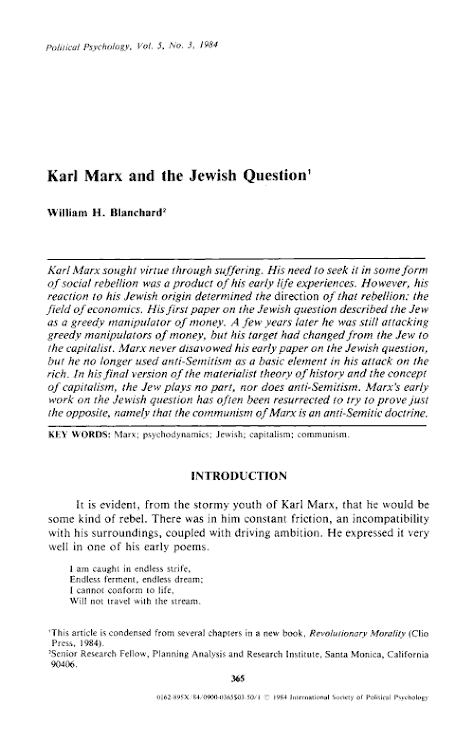











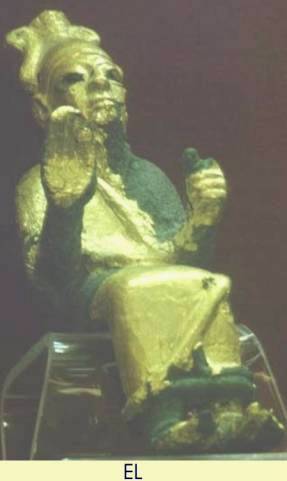

































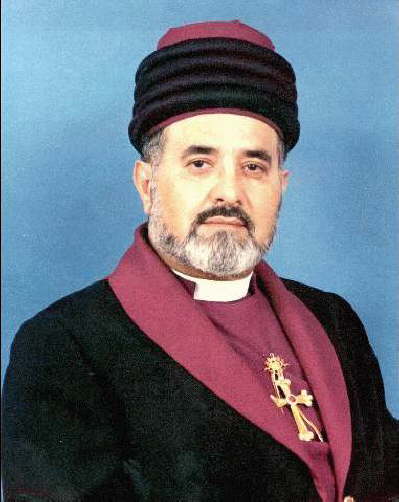+Anniversay+Dinner.jpg)





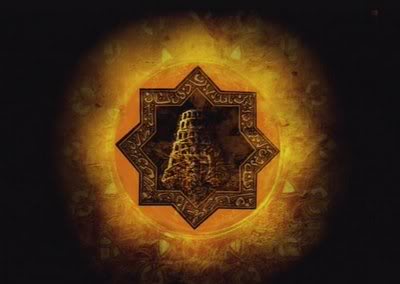









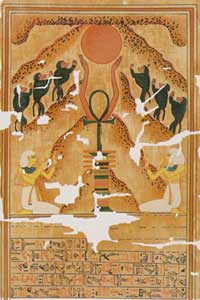








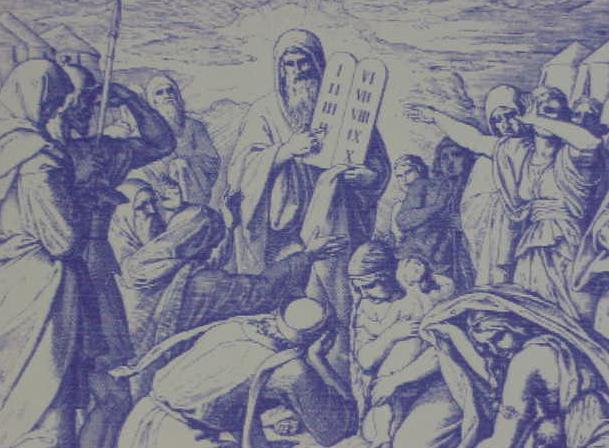
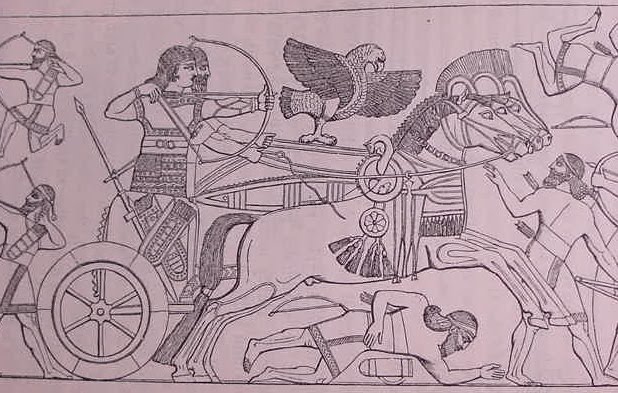
























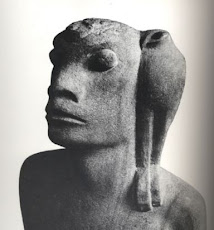












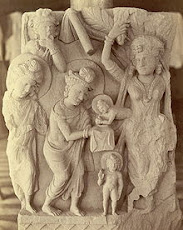



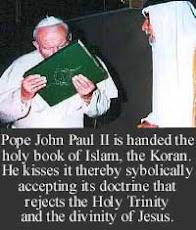












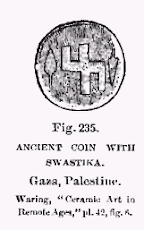



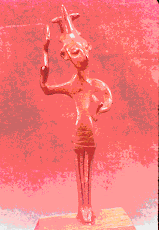






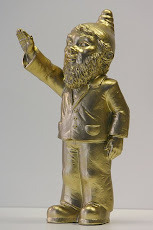










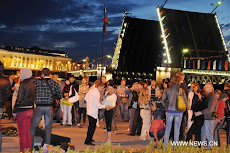

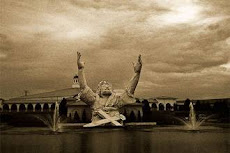














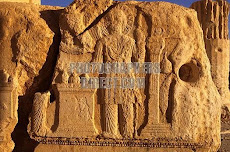

























No comments:
Post a Comment